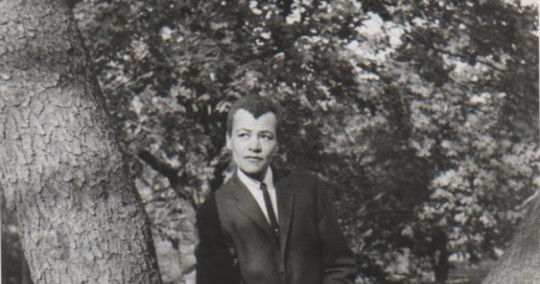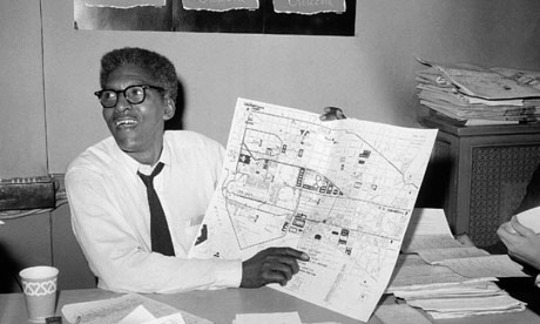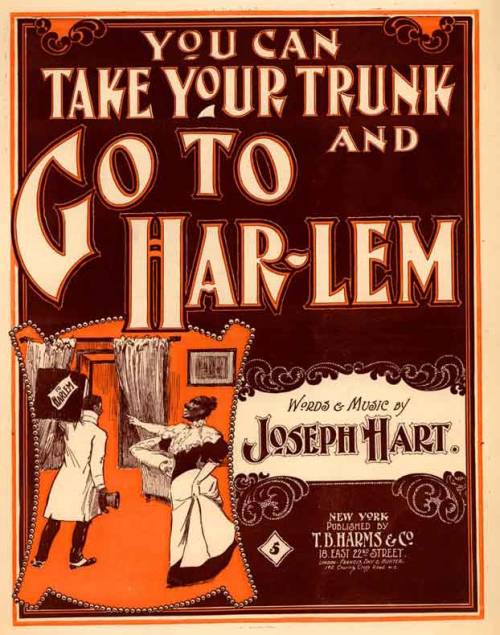#happy black history month everyone
You know when your (probably) white, male, straight, and cis friend asks you ‘if you could time travel to any time period, where would you go?’ Then proceed to refuse to accept answers such as ‘no where. The present is the best time to be me believe it or not’ or ‘the future’ - if you are a black wlw, don’t worry. I’ve got you covered.
Next time this nuisance appears answer: Harlem, 1920s.
Here’s why:
- The black lesbian subculture thrived in Harlem and was very influential. For instance, it has been inferred that the “butche/femme” patterns were first found in Harlem and thereafter became an identifiable image in other wlw subcultures.
- Harlem was by no means a homophobia-free zone in the 1920s. Nevertheless, the tolerance was sufficient enough for black lesbians to socialize openly in their own communities, which white lesbians generally couldn’t do. This specific time period and place would probably maximise your personal safety AND dating life.
- The black lesbians even shared dance floors, bars, and nightclubs with the heterosexuals. If this fact seems familiar to you, it may be because you’ve read of them in novels such as Home to Harlem, Strange Brother, The Big Money,andNigger Heaven - the nightclubs they featured all had counterparts in reality.
- You’ll for once get to outnumber the straights! heterosexuals sometimes quit clubs when they perceived that the gays were taking over.
- Once you find your vintage girlfriend and decide that you want to spend the rest of your life with her, you can marry her! Don’t feel pressured to keep it a secret - invite all your friends and family. Large butch/femme lesbian weddings were of the ordinary. Just make sure you you masculinize one of your first names to receive your wedding license. These licenses were placed on file in the New York City Marriage Bureau and were often common knowledge among Harlem heterosexuals.
- If you are bisexual you may even be treated better by the then ‘LGBTQ community’ than you are today thanks to A’Lelia Walker. Daughter to the first self made female African-American millionaire and a businesswoman, Walker is believed to have been bisexual. Her contemporaries observed that “all the women were crazy about her.” some even believed that the various men she married were merely her beards. Nevertheless, historian Lillian Faderman believes that she had much to do with the “manifest acceptance of bisexuality among the upper classes in Harlem: those who had moral reservations about bisexuality or considered it strange or decadent learnt to pretend a sophistication and suppress their disapproval if they desired Al’Lelia’s goodwill.”
I know that if I can go back I’ll make sure I also get my hair done at one of A’Lelia’s salons. If they are good enough got European princesses, Russian grand dukes, and world-renowned intellectuals, they are certainly good enough for me.
Source:Odd Girls and Twilight Lovers by Lillian Faderman
Post link

Marsha P. Johnson
- A leader of the Stonewall Riots. According to several eyewitnesses, Marsha was the one who “really started it”. She was “in the middle of the whole thing, screaming and yelling and throwing rocks and almost like Molly Pitcher in the Revolution or something”
- Dedicated her life to activism:
- Co-founded the Street Transvestite Action Revolutionaries (later renamed Street Transgender Action Revolutionaries)
- Ensured that the young drag queens, trans women and other street kids on Christopher Street were fed and clothed. Marsha also housed them whenever she could.
- In the 1980s, she was an activist and organizer in ACT UP.

Stormé DeLarverie
- Also a leader in the Stonewall Riots - has been identified as the “butch lesbian that threw the first punch” against the police officers.
- Several eye-witnesses recollections also recognize her as the cross-dressing lesbian that yelled “why don’t you guys do something” at the bystanders that evoked the reaction from them that helped make Stonewall a defining moment in history.
- Unofficially worked at gay bars who otherwise couldn’t afford security.

Bayard Rustin
- Was a leading strategist of the U.S. Civil Rights Movement between 1955-1968:
- The formidable behind the scenes figure of the civil rights movement who organized the March on Washington
- Through his influence, the civil rights leadership adopted a non-violent stance.
- Is and was often overlooked in African-American history because of the public’s discomfort with his sexual orientation.
- Supported LGBTQ rights and movements.
- Was posthumously awarded Rustin the Presidential Medal of Freedom by President Barack Obama.

Miss Major Griffin-Gracy
- Another leader in the Stonewall Riots.
- Has been involved in community efforts since 1978. She has worked at local food banks, provide services for trans women suffering from addiction or homelessness. During the AIDS epidemic she also provided healthcare and funeral services.
- Is currently serving as the Executive Director for the Transgender GenderVariant Intersex Justice Project, working to assist transgender persons who are disproportionately incarcerated under a prison-industrial complex.

Alvin Ailey
- At the young age of 22, Alvin AIley became Artistic Directer for the Horton Dance Company where he choreographed as well as directed scenes and costume designs.
- Formed the Alvin Ailey American Dance Theatre in 1958 but continued to choreograph for other companies.
- Ailey’s signature works prominently reflects his Black pride.
- Is credited for popularizing modern dance.
- Was also posthumously awarded the Presidential Medal of Freedom by President Barack Obama.
Feel free to add anyone I’ve missed!

